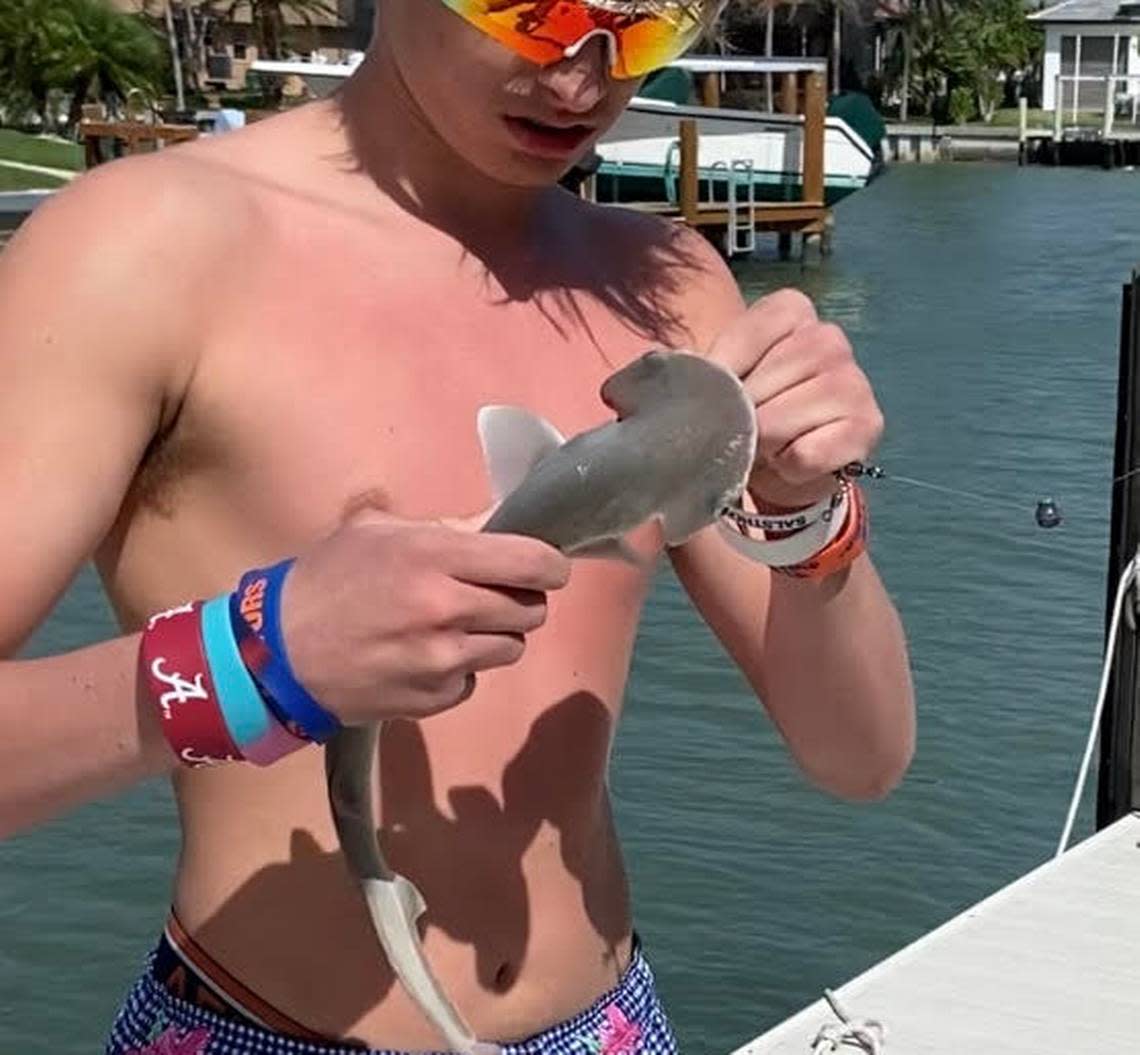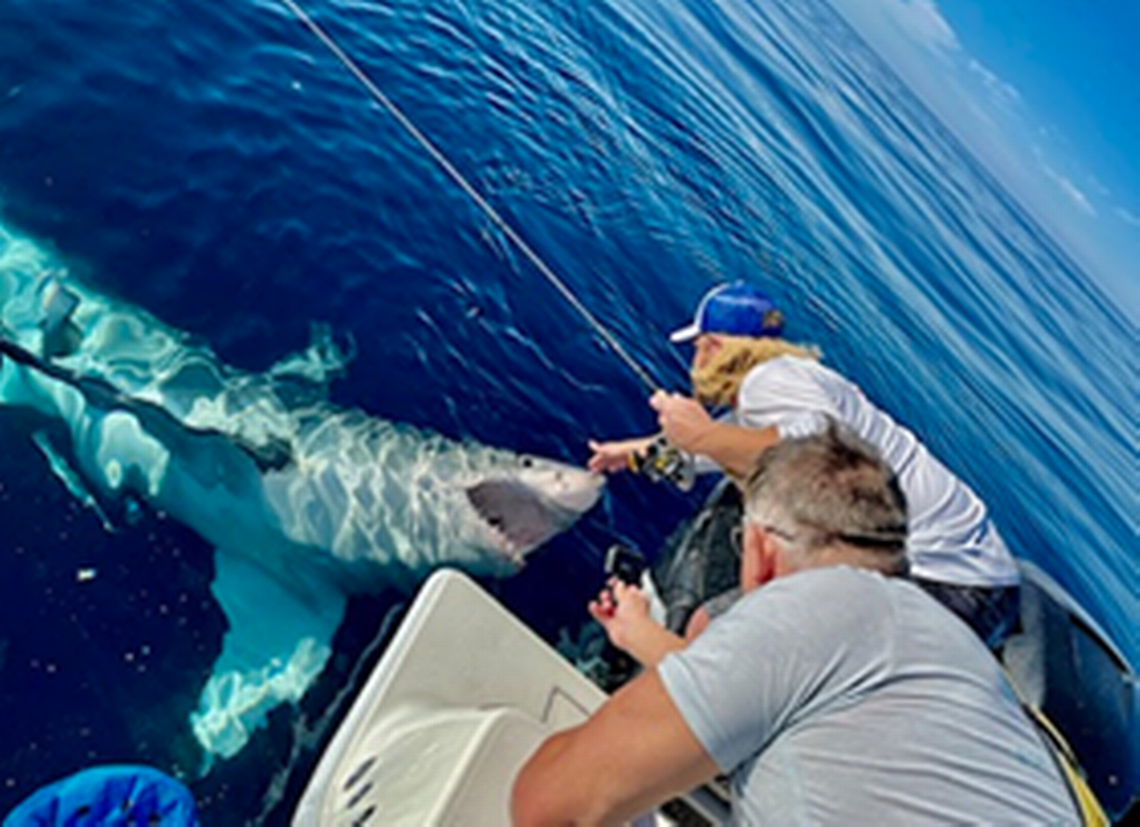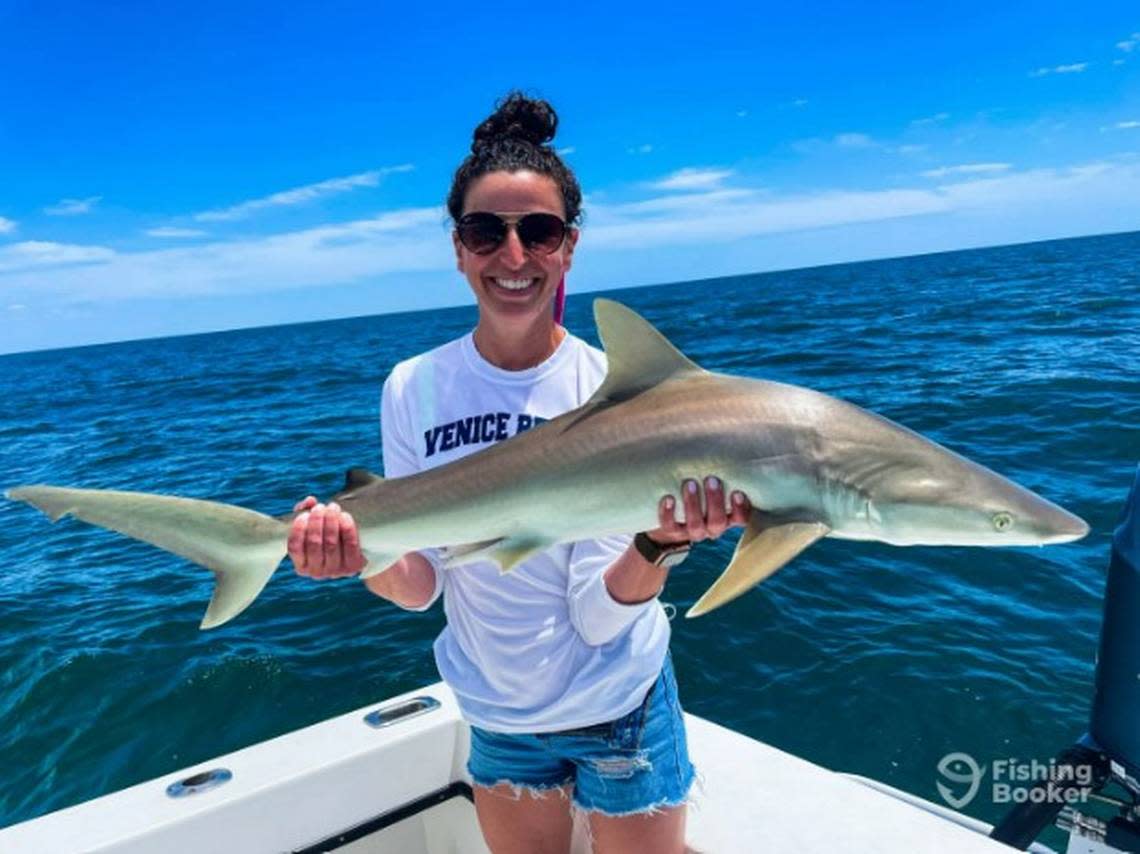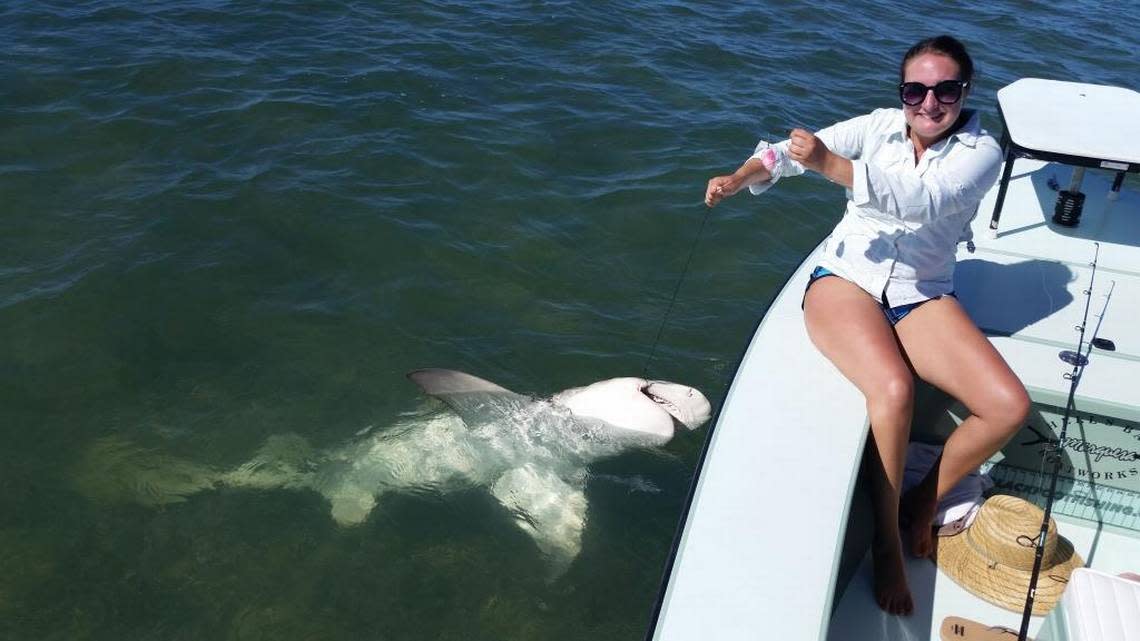Can you catch or keep a shark in Florida? What to know about the state’s fishing rules
The curious case of a South Florida eco-tourism guide landing in legal hot water over saving trapped sharks leads us to this question: Is it even legal to catch sharks in Florida?
Shark fishing in the state isn’t as common these days because of increased awareness that the apex predators are important for a healthy ocean ecosystem.
But the answer is: It’s still perfectly legal to hunt and harvest sharks.
According to the Florida Fish and Wildlife Commission — the state agency that regulates fishing and hunting in the state and enforces its laws — anglers can catch and keep one shark per day.
And if you’re on a boat, it’s two per day, per boat. If more than two people are on a boat, the limit is still two sharks per vessel.
Sharks you can keep
Here are some things the Fish and Wildlife agency says you should know before shark fishing from a pier, the beach or a boat.
Anglers can keep eight species of shark, regardless of size.
They are:
Atlantic Sharpnose
Blacknose
Blacktip
Bonnethead
Finetooth
Smooth dogfish
Florida smoothhound
Gulf smoothhound

Seven other species must be at least 54 inches long, from the fork of the tail to the nose, to harvest.
They are:
Bull
Nurse
Spinner
Blue
Oceanic whitetip
Porbeagle
Common thresher
What kind of gear?
Hook and line: Sharks can only be caught in Florida using hook and line. You can’t spearfish for sharks. And the use of treble hooks or any hook with two or more points is prohibited.
Steel and curved: Hooks must be non-stainless steel circle hooks, meaning the point is curved toward the back.
Cutter device: Anglers targeting sharks must have on them or on their boat a device that’s capable of cutting the leader or hook.
Take a shark course
To fish for sharks from shore, including from jetties, bridges and piers, the FWC requires anglers between 16 and 65 years old to take and pass an online educational course that can be found at MyFWC.com/SharkCourse.
After completing the course, you’ll receive the Shore-based Shark Fishing Permit at no cost, according to the FWC. The permit must be renewed annually.
Anglers fishing for sharks from boats do not need the permit, the agency said.

The permit is also required for those 16 and up who plan to fish from shore for any species of fish while angling with a metal leader more than four feet long; using a fighting belt or harness; fishing from a kayak; using a hook 1 1/2 inches long or longer at the widest inside distance.
Those younger than 16 don’t need the permit, but must take the class unless they’re fishing with a permit holder, the state fishing agency says.
Tips and rules for shark fishing from shore
Chum: Unlike fishing for sharks from a boat, anglers cannot use chum — bags of fish guts and blood — to attract them while angling from land.
Gills: If you’re going to release the shark, the gills should remain underwater during the process. For your safety and the safety of the shark, keep in in as much water as possible.
Crowds: Avoid fishing on crowded beaches and near swimmers and popular swimming areas.
Piers and bridges: When fishing from a pier or bridge, realize that catching and-releasing sharks will be difficult, and the FWC does not recommend it.
Hook and line: If you catch a large shark, walk it down to the base of the pier or bridge before removing the hook or cutting the line.

Nets: The FWC says small sharks can be brought up from the water using a bridge/pier net to remove the hook. The fish should also be lowered back into the water using that net, according to the FWC.
Do’s and Don’ts
Returning to water: Try not to remove the shark from the water unless you plan to harvest it. They’re more prone to being injured while out of the water. If you have to remove them, return them to the water quickly.

Fight time: Minimize the fight time, and use “shark-smart” tackle, especially if you plan to release the fish.
Surf: If fishing from the beach and the surf is rough, it’s not a good idea to target sharks
Treatment: Never sit on the shark’s back, and don’t delay releasing it to take pictures.
Release: If you can safely release the shark without delay, use a long-handled dehooking device.
Cutters: If the shark cannot be safely released quickly, you can use a bolt cutter to cut the hook. If that can’t be done, use wire cutters to sever the line as close to the hook as possible. Sharks may be less likely to survive if they are trailing a long fishing line from their jaws.
